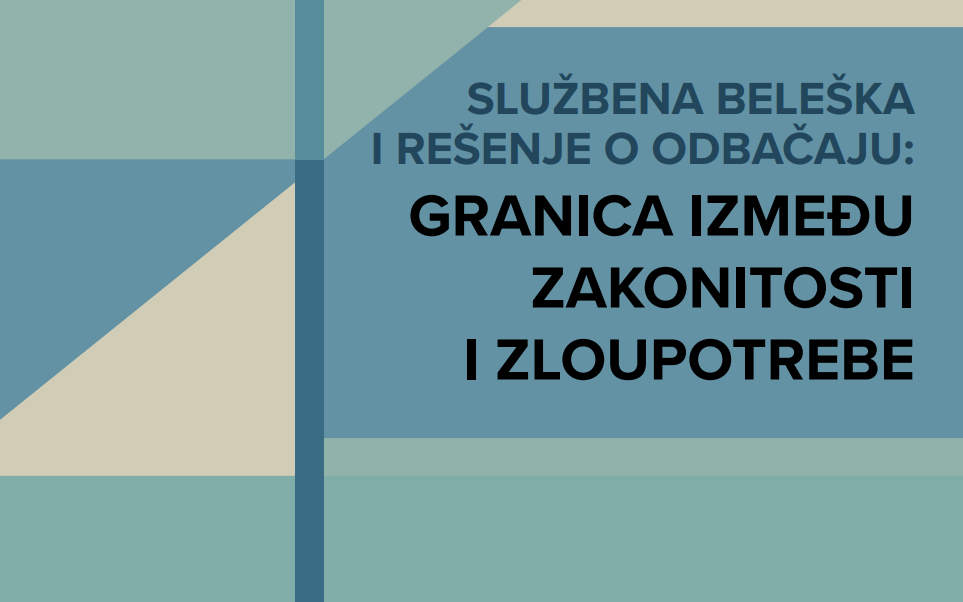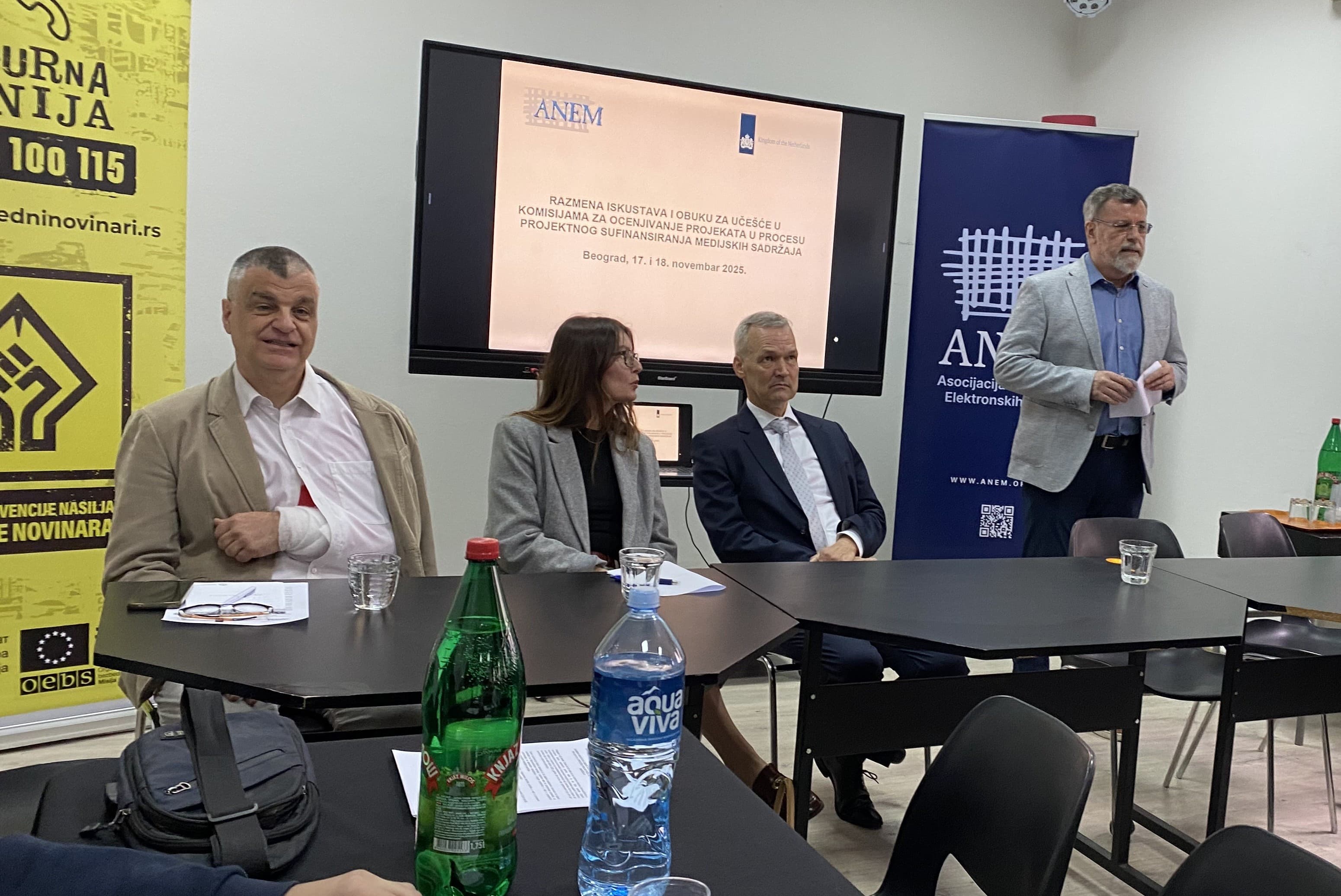The media is intensely filled with hate speech: How does this align with the authorities and why does it go unpunished?
In the past year and a half, there have been 102 cases of hate speech reported in domestic media, according to research by the Institute for Media and Diversity – Western Balkans. The findings indicate that the most common targets are women and political dissenters, while the main sources are tabloids and television stations with national licenses.

Participants in Danas assess that the government systematically uses hate speech to settle scores with opponents, normalizing even physical violence, while regulatory bodies practically do not exist.
The research indicates that hate speech in Serbia has significantly intensified following the collapse of the canopy in Novi Sad. The main sources are the media (41.5 percent), as well as politicians and public officials (21.5 percent).
Particularly problematic are tabloids and television stations with national frequencies, which, as noted, "amplify polarizing messages."
"Hate speech is completely unacceptable. Unfortunately, it is very widespread here, and the business models of numerous media outlets are based precisely on its use. The government consciously encourages this. It is a sort of 'joint criminal enterprise' in spreading hate speech as a political tool, which serves as justification for the threats and violence faced by journalists, activists, students, women, and members of minorities," says Veran Matić, president of the Board of the Association of Independent Electronic Media (ANEM), to Danas.
He emphasizes that in the first seven months of this year, Serbia has seen more threats and attacks on journalists than during the entire previous year.
"What is particularly concerning is that in the past year and a half, we have recorded a higher number of threats and attacks on female journalists, for the first time to such an extent. There is a clear correlation between the hate speech documented in this research and the increase in threats and violence," says Matić.
Matić points out that certain journalists and media outlets are particularly exposed to hate speech, making them more frequent targets for threats and attacks. Hate speech is often multilayered, and threats to safety come from multiple fronts – from the executive authority and the judiciary to organized aggressors.
"In addition to constant exposure to physical violence, hate speech has serious consequences for mental health. When you are subjected to such pressures for an extended period, it is not surprising that some studies show that more than 30 percent of female and male journalists are in a state that requires urgent professional health support," emphasizes Matić.
Rade Veljanovski, a retired professor at the Faculty of Political Sciences, explains that national broadcasters have a significantly greater influence on the public compared to local or regional programs.
He states that regardless of the type of media, whether it is radio, local television, or a national network, content that spreads hate speech should not be aired.
"Thus, they have a large influence. However, at this moment, we do not have an authority that should respond to this, primarily the REM Council. Therefore, it is exclusively within its jurisdiction. But again, on the other hand, this is what I say the government generates such a situation, because it is in the hands of the government to choose the REM Council and activate that body which should independently oversee the work of electronic media," says Veljanovski.
Veljanovski emphasizes that the government benefits from the absence of an independent supervisory body, so the process of electing members of the REM Council does not conclude, and the previous two attempts were carried out in an unprincipled and illegal manner.
"So, this is evidence of our overall legal and moral decline, and at this moment we can only observe it, register it, protest against it, but unfortunately nothing will change until the government changes," says Veljanovski.
He also explains that by law, the REM Council has several levels of sanctions it can impose.
"The second sanction is a public warning, the third sanction is the possibility of prohibiting someone from broadcasting a part of a program for a certain time, the fourth sanction is a temporary revocation of the broadcasting license for a complete period, up to one month. And only the fifth sanction is the revocation of the broadcasting license," explains Veljanovski.
He adds that since even the smallest sanctions are rarely applied, television stations operate without restrictions and act as they wish, ignoring formal legal frameworks.
"Because if the REM Council had existed and applied those sanctions, then anyone who received the first warning, caution, or public warning, and so on, would think about whether to continue," says Veljanovski.
According to data from the Institute for Media and Diversity research – the Western Balkans, women continue to be the primary targets of hate speech, and journalist Jovana Gligorijević from Vremena states that this is because their gender is often combined with their profession or social role.
"When it comes to women, there is always multiple exposure to discrimination and negative social phenomena because if we list other categories that are, above all, in tabloids, I mean television, exposed to hate speech, namely students, lawyers, politicians, and then add female students, female politicians, female activists, there will always be both grounds: based on what they do, plus the fact that they are women," believes Gligorijević.
She emphasizes that the atmosphere of hate serves the government well, as they have been consciously encouraging hate speech as a means of control and pressure for years, while in recent years the intensity of that pressure has further increased through the suppression of media freedoms and witch hunts against political opponents.
"The regime uses hate speech to, directing it towards certain individuals, through its pro-regime media, send a message to the public that it is acceptable to hate those people. According to this logic, those who are 'permitted' to be hated are also 'permitted' to be arrested, beaten, shackled, and kept in detention among stones, to sleep on the floor. This normalizes a completely inhumane and dehumanizing attitude towards political opponents, primarily students," emphasizes Gligorijević.
Slobodan Cvejić, vice-president and MP of the Serbia Center (SRCE), points out that hate speech in Serbia has become a common tool of SNS politics and a key factor in the polarization of society.
He notes that due to its frequency in media favorable to the government, such speech has practically been normalized and integrated into political culture, which, as he says, facilitates the transition from words to deeds and contributes to the rise of physical violence.
"We are now in a phase of normalizing physical violence; indirectly, President Vučić also did this in his speech at the UN, emphasizing that there are protests and violence everywhere in the world. Therefore, it is perhaps normal that Milan Radojičić announces to the citizens protesting in Kosjerić that he will come to their family home with his thugs," says Cvejić.
In Cvejić's opinion, students have quickly emerged as a significant challenge to the government, especially after they organized a walking tour across Serbia and managed to mobilize a large number of citizens for protests.
"And the other group dangerous to the government is journalists from independent media who enable the image of a corrupt regime and the just struggle of citizens against it to spread within the country and beyond the borders of Serbia. That is why both groups have been caught in Vučić's web of evil," concludes Cvejić.
Source: Danas
Related Articles

"I am not sure what to expect when I go out on the street": Journalist Isidora Kovačević after the court acquitted the man who was posting wanted notices with her image.

NUNS Analysis: Official Notes Instead of Legal Protection – A System That Leaves Journalists Unprotected











